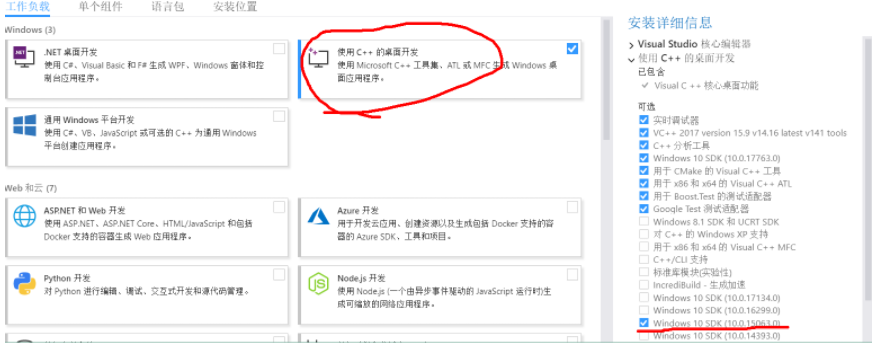可以将文章内容翻译成中文,广告屏蔽插件可能会导致该功能失效(如失效,请关闭广告屏蔽插件后再试):
问题:
I need to get the country location of a iOS device.
I've been trying to use CoreLocation with MKReverseGeocoder. However this seems to return erraneous quite frequently. And I only need the country, no need for streets and such.
How can this be done in a more stable way?
回答1:
NSLocale is just a setting about currently used regional settings, it doesn't mean the actual country you're in.
Use CLLocationManager to get current location & CLGeocoder to perform reverse-geocoding. You can get country name from there.
回答2:
NSString *countryCode = [[NSLocale currentLocale] objectForKey: NSLocaleCountryCode];
will get you an identifier like e.g. "US" (United States), "ES" (Spain), etc.
In Swift 3:
let countryCode = NSLocale.current.regionCode
In Swift 2.2:
let countryCode = NSLocale.currentLocale().objectForKey(NSLocaleCountryCode) as String
Compared to a solution based on CLLocationManager this approach has pros and cons. The primary con is that it doesn't guarantee that this is where the device is physically if the user configures it differently. This can however also be seen as a pro since it instead shows which country a user is mentally/culturally aligned with - so if e.g. I go abroad on vacation then the locale is still set to my home country. However a pretty big pro is that this API doesn't require user permission like CLLocationManager does. So if you haven't already gotten permission to use the user's location, and you can't really justify throwing a popup dialog in the user's face (or they already rejected that popup and you need a fallback) then this is probably the API you want to use. Some typical use cases for this could be personalization (e.g. culturally relevant content, default formats, etc.) and analytics.
回答3:
@Denis's answer is good -- here is some code putting his answer into practice. This is for a custom class that you have set to conform to the CLLocationManagerDelegate protocol. It's a little simplified (e.g. if the location manager returns multiple locations, it just goes with the first one) but should give folks a decent start...
- (id) init //designated initializer
{
if (self)
{
self.locationManager = [[CLLocationManager alloc] init];
self.geocoder = [[CLGeocoder alloc] init];
self.locationManager.delegate = self;
[self.locationManager startMonitoringSignificantLocationChanges];
}
return self;
}
- (void)locationManager:(CLLocationManager *)manager didUpdateLocations:(NSArray *)locations
{
if (locations == nil)
return;
self.currentLocation = [locations objectAtIndex:0];
[self.geocoder reverseGeocodeLocation:self.currentLocation completionHandler:^(NSArray *placemarks, NSError *error)
{
if (placemarks == nil)
return;
self.currentLocPlacemark = [placemarks objectAtIndex:0];
NSLog(@"Current country: %@", [self.currentLocPlacemark country]);
NSLog(@"Current country code: %@", [self.currentLocPlacemark ISOcountryCode]);
}];
}
回答4:
Here is @Denis's and @Matt's answers put together for a Swift 3 solution:
import UIKit
import CoreLocation
class ViewController: UIViewController, CLLocationManagerDelegate {
let locationManager = CLLocationManager()
let geoCoder = CLGeocoder()
override func viewDidLoad() {
super.viewDidLoad()
locationManager.requestAlwaysAuthorization()
if CLLocationManager.locationServicesEnabled() {
locationManager.delegate = self
locationManager.startMonitoringSignificantLocationChanges()
}
}
func locationManager(_ manager: CLLocationManager, didUpdateLocations locations: [CLLocation]) {
guard let currentLocation = locations.first else { return }
geoCoder.reverseGeocodeLocation(currentLocation) { (placemarks, error) in
guard let currentLocPlacemark = placemarks?.first else { return }
print(currentLocPlacemark.country ?? "No country found")
print(currentLocPlacemark.isoCountryCode ?? "No country code found")
}
}
}
Don't forget to set the NSLocationAlwaysUsageDescription or NSLocationWhenInUseUsageDescription in Info.plist as well!
回答5:
Here's an alternative, perhaps overly circuitous method. The other solutions are based on manual settings (NSLocale) or on requesting for permission to use location services which can be denied (CLLocationManager), so they have drawbacks.
You can get the current country based on the local timezone. My app is interfacing with a server running Python with pytz installed, and that module provides a dictionary of country codes to timezone strings. I only really need to have the server know the country so I don't have to set it up entirely on iOS. On the Python side:
>>> import pytz
>>> for country, timezones in pytz.country_timezones.items():
... print country, timezones
...
BD ['Asia/Dhaka']
BE ['Europe/Brussels']
BF ['Africa/Ouagadougou']
BG ['Europe/Sofia']
BA ['Europe/Sarajevo']
BB ['America/Barbados']
WF ['Pacific/Wallis']
...
On the iOS side:
NSTimeZone *tz = [NSTimeZone localTimeZone];
DLog(@"Local timezone: %@", tz.name); // prints "America/Los_Angeles"
I have my server send in the local timezone name and look it up in the pytz country_timezones dictionary.
If you make an iOS version of the dictionary available in pytz or some other source, you can use it to immediately look up the country code without the help of a server, based on timezone settings, which are often up to date.
I may be misunderstanding NSLocale though. Does it give you the country code through regional formatting preferences or timezone settings? If the latter, then this is just a more complicated way of getting the same result...
回答6:
NSLocale *countryLocale = [NSLocale currentLocale];
NSString *countryCode = [countryLocale objectForKey:NSLocaleCountryCode];
NSString *country = [countryLocale displayNameForKey:NSLocaleCountryCode value:countryCode];
NSLog(@"Country Locale:%@ Code:%@ Name:%@", countryLocale, countryCode, country);
//Country Locale:<__NSCFLocale: 0x7fd4b343ed40> Code:US Name:United States
回答7:
For Swift 3 it's even simpler:
let countryCode = Locale.current.regionCode
回答8:
You can get NSTimeZone from CLLocation: https://github.com/Alterplay/APTimeZones and works locally.
回答9:
If you are only interested in telephone devices, then the technique mentioned here might be useful to you: Determine iPhone user's country
回答10:
Here's a quick loop in Swift 3 that returns a complete list of country codes.
let countryCode = NSLocale.isoCountryCodes
for country in countryCode {
print(country)
}
回答11:
@Rob
let locale = Locale.current
let code = (locale as NSLocale).object(forKey: NSLocale.Key.countryCode) as! String?
using these code you will get your region country code and if you didn't get still then change it just go in Phone setting->general->language & region and set your region you want
回答12:
Swift 4.0 code for getting the Country name as per region set:
let countryLocale = NSLocale.current
let countryCode = countryLocale.regionCode
let country = (countryLocale as NSLocale).displayName(forKey: NSLocale.Key.countryCode, value: countryCode)
print(countryCode, country)
prints: Optional("NG") Optional("Nigeria"). //for nigeria region set


